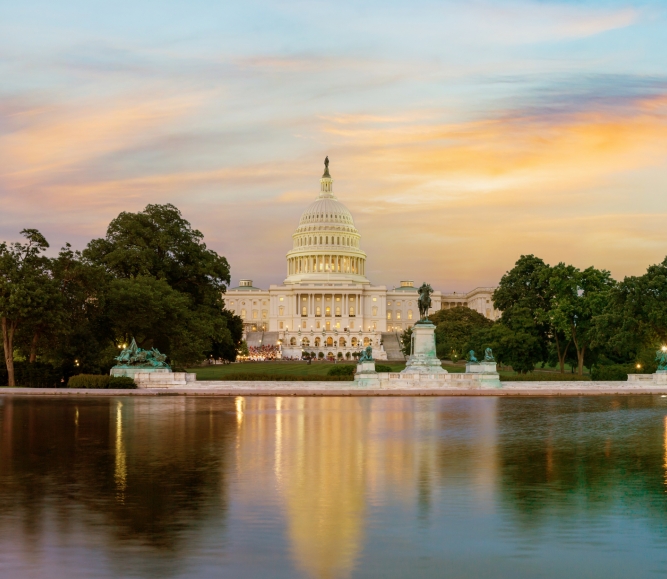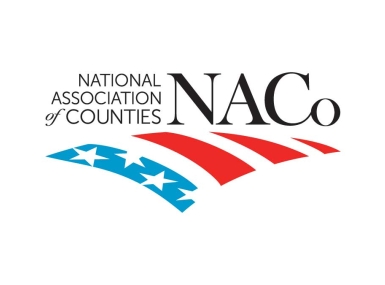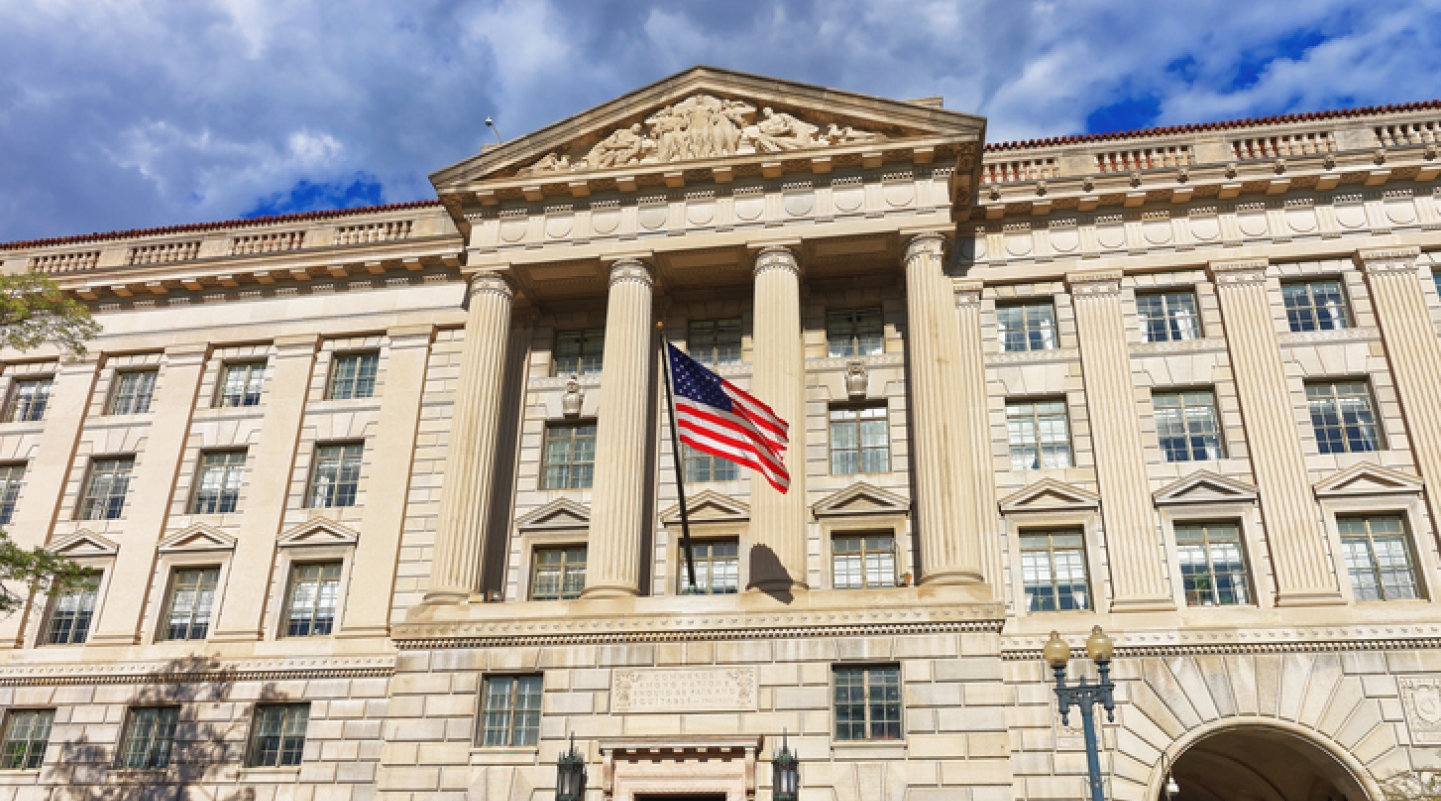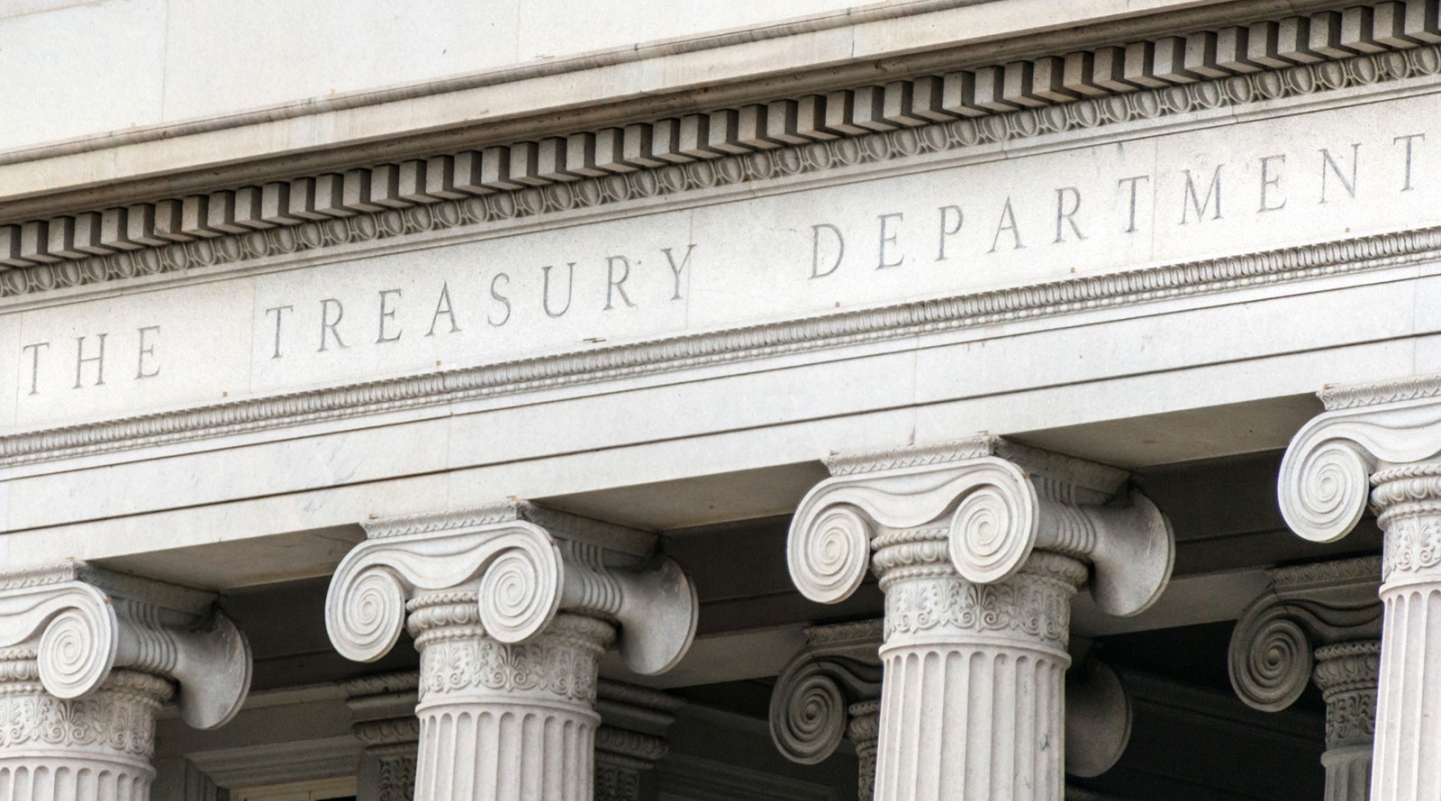Legislative Analysis for Counties: FY 2024 Appropriations

Upcoming Events
Related News
In March 2024, Congress passed and the president signed two Fiscal Year (FY) 2024 “minibus” appropriations bills to fund the federal government through September 30, 2024. The first minibus (H.R.4366), including the FY 2024 Agriculture-Rural Development, Commerce-Justice-Science, Interior-Environment, Military Construction-Veterans Affairs, Energy & Water and Transportation-HUD spending bills, was enacted on March 8, 2024. The second minibus (H.R. 2882), including the FY 2024 Defense, Financial Services & General Government, Homeland Security, Labor-HHS-Education, Legislative Branch and State & Foreign Operations spending bills, was enacted on March 23, 2024.
Enactment of these bills followed a series of four Continuing Resolutions (CR) to fund the federal government and avert a government shutdown since the beginning of the current federal fiscal year on October 1, 2023. Unlike previous appropriations cycles, this process also included the use of “laddered” stopgap measures, in which federal spending was extended through two separate deadlines.
In total, both minibus packages represent just over $1.6 trillion in discretionary spending across all 12 spending bills. Of this total amount, over $773 billion is in non-defense discretionary spending, which closely mirrors the comparable FY 2023 level, and nearly $825 billion is in defense discretionary spending, an increase of 3.4 percent.
In June 2023, Congress passed the bipartisan Fiscal Responsibility Act (FRA) debt limit agreement which set discretionary defense and non-defense spending limits for FY 2024 and 2025 enforced through sequestration. Although the $1.6 trillion FY 2024 budget is slightly higher than the limits agreed upon in the FRA, these appropriations are in line with the revised bicameral, bipartisan topline spending agreement announced in January 2024. In April 2024, the Office of Management and Budget (OMB) issued its Final Sequestration Report to the President and Congress for Fiscal Year 2024. In the report, OMB found that these enacted appropriations are within the discretionary spending limits for 2024 and sequestration of FY 2024, therefore, is not required.
The FY 2024 appropriations packages include several key investments of importance to counties detailed in this report. These include, but are not limited to, full funding for the Payments in Lieu of Taxes (PILT) program, sustained funding for the Community Development Block Grant (CDBG) and rural broadband programs and critical policy riders that will make it easier for counties to provide critical mental health services to their residents. These programs and others funded through these bills will enable counties to continue providing critical services throughout our communities in 2024.
In addition to regular programmatic funding and extensions, FY 2024 appropriations included approximately over $14 billion in earmarks (rebranded as community project funding and congressionally directed spending). This represents nearly 8,000 projects and will provide direct federal investments to hundreds of county programs and critical infrastructure projects aimed to better serve communities.
This analysis showcases funding highlights for key programs impacting counties, which includes those listed below:
County Priorities Included in FY 2024 Appropriations
- Full funding for the Payments in Lieu of Taxes (PILT) program
- Making permanent the option for states to waive IMD exclusion for substance use disorder (SUD) treatment and services
- Decreased funding for the U.S. Federal Emergency Management Agency (FEMA) and U.S. Customs and Border Patrol (CBP) Shelter and Services Program and increased funds to hire 22,000 additional Border Patrol agents and 150 additional CBP Officers
- Continued funding for rural broadbandprograms at the U.S. Department of Agriculture (USDA), including the ReConnect, Distance Learning and Telemedicine and the Community Connect Programs
- Sets FY 2024 spending limits on federal highway ($60.8 billion) and transit funding ($13.9 billion) authorized through the federal Highway Trust Fund equivalent with levels set by the Bipartisan Infrastructure Law (BIL/P.L. 117-58)
- Increased funding for the Special Supplemental Nutrition Program for Women, Infants and Children (WIC)
- Over $500 million cut from USDA Rural Development programs for a total of $3.5 billion in FY 2024
- Approximately $32.4 billion for Housing Choice Vouchers and $4 billion for Homeless Assistance Grants
- $8.75 billion for the Child Care and Development Block Grant (CCDBG), a $725 million increase over FY 2023
- Funding for Election Security Grants to improve the administration of federal elections, enhance election technology and make security improvements as authorized by Help America Vote Act (HAVA)
- Approximately $3.2 billion for FEMA grants to state and local governments, including the State Homeland Security Grant Program and $324 million for the Staffing for Adequate Fire and Emergency Response (SAFER) grant program to assist local fire departments
- $5.7 billion for Workforce Innovation and Opportunity Act programs that help counties tackle and overcome challenges facing job seekers and employers in their communities
- $2.77 billion for the Clean Water and Drinking Water State Revolving Funds (SRFs), excluding additional IIJA funding
Key Policy Riders & Extenders
- Foreign Agriculture Land Acquisitions: H.R. 4366 adds the U.S. Department of Agriculture to the Committee on Foreign Investment in the United States (CFIUS) for issues involving “agricultural land, biotechnology and industry.” This designation requires USDA to notify CFIUS of any agricultural land transactions reported under the Agricultural Foreign Investment Disclosure Act (AFIDA) that “may pose a risk to national security.”
- Reauthorizes the National Flood Insurance Program (NFIP): H.R. 2882 reauthorizes the NFIP until September 30, 2024. This represents the 30th short term extension of the NFIP since September of 2017. NACo continues to advocate for long-term reauthorization and reforms to the program to ensure continuity and make critical changes to improve its administration for our residents.
- Key Win - Permanent reforms to the Institutions for Mental Disease (IMD) to support individuals with substance use disorder (SUD): H.R. 2882 makes the option to waive IMD exclusion for SUD treatment and services permanent. This option was first provided in 2018 SUPPORT Act, which granted state Medicaid programs the option to receive federal matching payments for SUD treatment provided in certain IMDs for up to 30 days over a 12-month period through temporary Medicaid waivers. Reforms to the IMD exclusion policy is a primary focus for NACo’s Commission on Mental Health and Wellbeing, which has prioritized expanding the treatment capacity of county-operated hospitals and behavioral health facilities while also promoting equitable access to treatment options for low-income individuals.
- DSH Payment Cut Delays: H.R. 2882 makes further delay an $8 billion-per year cut to Medicaid Disproportionate Share Hospital payments to January 1, 2025. These payments are critical to county-owned hospitals, who leverage these supplemental payments to offset revenue losses for facilities that treat disproportionately large numbers of Medicaid beneficiaries.
- Permanent Coverage of Medication Assisted Treatment (MAT) under Medicaid: H.R.2882 makes coverage of Medication Assisted Treatment under Medicaid a permanent offering for state plans. Counties are front line providers of Medicaid services, and Medicaid accounts for nearly a quarter of all publicly funded expenditures on substance use disorders.
- Mandated state Medicaid suspension upon arrest versus termination: H.R. 2882 would require states to suspend Medicaid benefits upon incarceration. The Medicaid Inmate Exclusion policy, revokes federal health benefits for adults and juveniles that are being housed in correctional institutions - making no distinction between individuals who are being detained in jails prior to conviction, versus individuals who have been adjudicated and sentenced to time in a jail or prison. While suspension over termination does not reverse this policy, it allows justice involved individuals to have their benefits reinstated, rather than having to reenroll upon release.
- Extends the Temporary Assistance for Needy Families (TANF) program through September 30, 2024: TANF is a mandatory block grant that provides states with flexible funding for programs that reduce poverty, promote employment and encourage family preservation and is county administered in 9 states: California, Colorado, Minnesota, New Jersey, New York, North Carolina, North Dakota, Ohio and Virginia. Congress last reauthorized TANF in 2005 and has renewed the program through a series of short-term extensions since its expiration in 2010.
- Extends Title IV-B Child Welfare Services through December 31, 2024: A combination of discretionary and mandatory funding, Title IV-B grants to states provide flexible funding to enhance the well-being of children and families, prevent child abuse and neglect, and provide support for children in and out-of-home care.
- Ensures direct federal funding for local health departments: H.R. 2882 ensures federal funding reaches local health departments beyond those directly funded, urging CDC to mandate state funding when programmatically appropriate, a significant win for county health systems who own and operate approximately two thirds of local health departments.
- Heavy Truck Weight Exemptions: H.R. 4366 creates new heavy truck weight exemptions in Mississippi for agricultural haulers and log trucks up to 88,000 lbs.; the law also creates a general exemption in West Virginia, though counties are not responsible for the state’s roads and bridges.
U.S. Department of Agriculture
Program | FY 2024 Funding | Change from FY 2023 | % Change
|
Farm to School Grants | $5.0 million | -$9.0 million | -64.3% |
This program brings locally or regionally produced foods into schools, including sourcing local agriculture for school meal programs, providing hands-on learning activities and consolidating food-related education into standards-based classroom curriculum. Counties support the initiatives that promote access to healthy food in schools while supporting local agriculture. | |||
Special Supplemental Nutrition Program for Women, Infants and Children (WIC) | $7.03 billion | $1.03 billion | 17.2% |
WIC supports early childhood development, a key county priority, through nutrition assistance and service referrals. Though administered at the state level, WIC operates through 1,900 local agencies, including county health departments, at thousands of clinic sites. | |||
Water and Waste Disposal Program | $1.51 billion | -$560.0 million | -27.1% |
The Water and Waste Disposal Program helps counties make critical investments in our nation's water infrastructure. Critical infrastructure, such as water and wastewater, remain a priority for many rural communities. The cost of building, maintaining, and upgrading local water systems is a challenge for many small towns and rural counties. Beyond the public health interests, clean and reliable water is a necessity to spur economic growth. Studies have concluded that water and sewer projects can save or create jobs in rural communities by attracting and retaining businesses. | |||
Rural e-Connectivity (ReConnect) Program | $90.0 million | -$258.0 million | -74.1% |
The Rural e-Connectivity (ReConnect) Loan and Grant Program furnishes loans and grants to provide funds for the costs of construction, improvement, or acquisition of facilities and equipment needed to provide broadband service in eligible rural areas. NACo supports federal funding for broadband connectivity infrastructure projects that build out to unserved and underserved areas. | |||
Distance Learning, Telemedicine and Broadband Program | $40.0 million | -$20.0 million | -33.3% |
The purpose of this program is to encourage and improve telemedicine services and distance learning services in rural areas using telecommunications, computer networks, and related advanced technologies by students, teachers, medical professionals, and rural residents. NACo supports federal funding for broadband connectivity infrastructure projects that build out to unserved and underserved areas. | |||
Community Connect Grant Program | $20.0 million | -$15.0 million | -42.8% |
The Community Connect provides financial assistance to eligible applicants that will provide broadband service in rural, economically-challenged communities where service does not exist. NACo supports federal funding for broadband connectivity infrastructure projects that build out to unserved and underserved areas. | |||
Rural Community Facilities Program | $2.80 billion | $0 | 0.0% |
This program provides affordable funding to develop essential community facilities in rural areas. An essential community facility is defined as a facility that provides an essential service to the local community for the orderly development of the community in a primarily rural area, and does not include private, commercial or business undertakings. Counties support extending eligibility for the Community Facilities Direct Loan & Grant Program to rural governments to provide financial assistance to county operated facilities. | |||
Rural Housing Loan and Rental Assistance Programs | $28.13 billion | -$5.26 billion | -15.7% |
Rural Housing Services’ rural housing loan and rental assistance programs give families and individuals the opportunity to buy, build, rent or repair affordable homes located in rural America. NACo supports the U.S. Department of Agriculture’s (USDA) housing programs and opposes any effort to move these programs to the U.S. Department of Housing and Urban Development. | |||
Rural Business Programs | $66.62 million | -$19.90 million | -23.0% |
Administered by USDA's Rural Business-Cooperative Service, rural business programs assists rural communities with creating and expanding entrepreneurship and job creation opportunities, as well as develop and access new markets and products, through strategic investments and technical assistance. NACo calls on Congress to provide needed support to USDA so that it may explore innovative approaches for building community capacity and introduce additional economic enhancement opportunities to rural businesses. | |||
Rural Cooperative Development Grants | $24.60 million | -3.70 million | -13.1% |
The Rural Cooperative Development Grant program improves the economic condition of rural areas by helping individuals and businesses start, expand or improve rural cooperatives and other mutually-owned businesses through Cooperative Development Centers. NACo supports this flexibility and urges Congress to adequately fund Rural Housing, Rural Business Cooperative and Rural Utility Services during the annual appropriations process. | |||
Rural Energy for America Program (REAP) | $50.0 million | $30.0 million | 150.0% |
The program provides guaranteed loan financing and grant funding to agricultural producers and rural small businesses for renewable energy systems or to make energy efficiency improvements. Agricultural producers may also apply for new energy efficient equipment and new system loans for agricultural production and processing. Biomass fuels (ethanol, bio-diesel) are paramount not only to the reduction of pollution in counties throughout the nation, but also serve as revenue generators for many farmers that are struggling with low prices for their crops and increased costs of production. Their use and development should be encouraged and enhanced by Congress. | |||
U.S. Department of Commerce
Program | FY 2024 Funding | Change from FY 2023 | % Change
|
Economic Development Administration | $468.0 million | -$30.0 million | -6.0% |
The EDA makes investments in economically distressed communities to create jobs for U.S. workers, promote American innovation and accelerate long-term sustainable economic growth. | |||
U.S. Census Bureau | $1.38 billion | -$102.0 million | -6.9% |
Counties support accurate and fair census data, which impacts the distribution of funding across numerous federal programs. NACo supports full funding for the American Community Survey, which provides county leaders with critical data to demonstrate emerging and local trends. Counties also support the Census Bureau’s Population Estimates program and the Local Update of Census Addresses (LUCA) Program. | |||
National Oceanic and Atmospheric Administration | $6.32 billion | $117.72 million | 1.9% |
The National Oceanic and Atmospheric Administration (NOAA) provides critical resources such as weather forecasts, climate data and marine resource management tools to aid counties in disaster preparedness efforts, economic planning and environmental stewardship at the local level. | |||
U.S. Department of Justice
Program | FY 2024 Funding | Change from FY 2023 | % Change
|
Byrne Memorial Justice Assistance Grants (JAG) | $345.50 million | -$67.0 million | -16.3% |
Byrne-JAG provides resources to counties across the country to utilize emerging and evidence-based approaches to address the public safety challenges facing their jurisdictions | |||
Community Oriented Policing Services (COPS) Program | $664.52 million | $1.64 million | 0.2% |
The COPS program supports local law enforcement agencies to ensure they have the tools, personnel and resources necessary to protect and serve their communities every day. | |||
State Criminal Alien Assistance Program (SCAAP) | $234.0 million | $0 | 0.0% |
SCAAP reimburse states and local governments – including counties – for the cost of incarcerating undocumented immigrants who have been convicted of certain crimes.
| |||
Second Chance Act Grants | $117.0 million | -$8.0 million | -6.4% |
Second Chance Act grants provide counties with the resources needed to help individuals successfully reintegrate back into the community following their release from jail | |||
Juvenile Justice Delinquency Prevention Act (JJDPA) | $375.0 million | -$25.0 million | -6.3% |
JJDPA is the principal federal program through which the federal government sets standards for the care and custody of juveniles and provides direct funding to counties to facilitate compliance with these standards. | |||
Justice and Mental Health Collaboration Program (JMHCP) | $40.0 million | -$5.0 million | -11.1% |
JMHCP provides state and local governments with grants for a broad range of activities, including jail diversion programs, mental health courts, creating or expanding community-based treatment programs and providing in-jail treatment and transitional services | |||
Drug Courts - DOJ | $89.0 million | -$6.0 million | -6.3% |
The Drug Courts program grants to states, state courts, local courts and local governments for the development and establishment of drug courts. | |||
Veterans' Treatment Courts | $32.0 million | -$3.0 million | -8.6% |
The Veterans’ Treatment Courts program provides grants and technical assistance for state, local and tribal governments interested in starting or expanding veteran treatment court programs. | |||
Prescription Drug Monitoring Program (PDMPs) | $35.0 million | $0 | 0.0% |
PDMP provides funding for electronic databases that track controlled substance prescriptions. PDMPs help providers identify patients at risk of opioid misuse, abuse and/or overdose due to overlapping prescriptions, high dosages, or co-prescribing of opioids with benzodiazepines. | |||
Comprehensive Opioid Abuse Program (COAP) | $189.0 million | -$1.0 million | -0.5% |
COAP provides financial and technical assistance to states, units of local government and Indian tribal governments to plan, develop and implement comprehensive efforts to identify, respond to, treat and support those impacted by the substance abuse epidemic | |||
U.S. Department of Defense
*Does not include Overseas Contingency Operations (OCO) funding
Program | FY 2024 Funding | Change from FY 2023 | % Change
|
Military Personnel | $176.24 billion | $3.50 million | 2.0% |
500 counties serve as home to at least one military installation, and county leaders are committed to ensuring that active-duty service members and their families have the supports and resources they need to thrive. Military Personnel funding includes military pay, suicide prevention and sexual assault response programs, the basic allowance for housing, basic needs allowance and other provisions impacting qualify of life for active, reserve, and National Guard military personnel. | |||
Readiness and Environmental Protection Integration | $179.79 million | $4.79 million | 2.7% |
The Readiness and Environmental Protection Integration (REPI) Program supports cost-sharing agreements between the Military Services and state and local governments to preserve military organizations by avoiding land use conflicts near military installations, addressing environmental restrictions that limit military activities and increasing resilience to climate change. | |||
Defense Community Infrastructure Program | $100 million | $0 | 0.0% |
The Defense Community Infrastructure Program (DCIP) awards funds to state and local governments to address deficiencies in community infrastructure supportive of a military installation. | |||
Program | FY 2024 Funding | Change from FY 2023 | % Change
|
Weatherization Assistance Program | $326.0 million | $0 | 0% |
Counties support the Weatherization Assistance Program, which helps low-income households make weatherization and energy-efficiency improvements to their homes to reduce energy costs. | |||
Energy Efficiency and Renewable Energy Funding | $3.46 billion | $0 | 0% |
The Energy Efficiency and Renewable Energy Office provides technical and financial assistance to counties to support renewable energy projects. | |||
U.S. Army Corps of Engineers – Civil Works
Program | FY 2024 Funding | Change from FY 2023 | % Change |
Project Construction | $1.84 billion | $36.21 million | 1.8% |
Counties support federal investment in water infrastructure projects at the local level. | |||
Operation & Maintenance | $5.55 billion | $474.29 million | 8.9% |
Counties support federal investment in water infrastructure projects at the local level. | |||
U.S. Election Assistance Commission
Program | FY 2024 Funding | Change from FY 2023 | % Change
|
HAVA Election Security Grants | $55.0 million | -$20.0 million | -27.0% |
Election security grants are authorized by the Help America Vote Act of 2002 (HAVA) to provide funding to states to meet their most pressing election infrastructure security priorities and to improve the administration of federal elections. Counties support consistent federal investments in election administration and federal funding should be administered in consultation with counties with a specified portion of a state’s federal election funds should be guaranteed to local governments. | |||
U.S. Department of Homeland Security
Program | FY 2024 Funding | Change from FY 2023 | % Change
|
U.S. Citizenship and Immigration Services | $271.40 million | $3.40 million | 1.4% |
USCIS administers the nation’s naturalization and immigration system including work verification for employers and processing applications for permanent residence. Funding may be used for USCIS operations and support including the E-Verify Program, application processing, the reduction of backlogs within asylum, field, and service center offices, and support of the refugee program. | |||
Shelter and Services Program (formerly the Emergency Food and Shelter Program – Humanitarian Aid) | $650.0 million | $150.0 million | -18.8% |
The U.S. Customs and Border Protection (CBP) and Federal Emergency Management (FEMA) Shelter and Services Program (SSP), formerly known as the Emergency Food and Shelter-Humanitarian Aid (EFSP-H) program, provides funding to county governments and non-profits who are receiving influxes of migrants. Counties are the traditional front-line providers of social, health and supportive services, and this funding helps relieve that financial burden. | |||
FEMA Disaster Relief Fund (DRF) | $20.36 billion | $461.0 million | 2.3% |
The DRF allows FEMA to fund authorized federal disaster support activities as well as eligible state, local, tribal and territorial actions such as providing emergency protection, rebuilding, and debris removal. | |||
State Homeland Security Grant Program (SHSGP) | $468.0 million | -$52.0 million | -10.0% |
This program assists state, local and tribal efforts to prevent acts of terrorism and prepare to respond to threats and hazards that pose security risks for localities. | |||
Urban Area Security Initiative (UASI) | $553.50 million | -$61.50 million | -10.0% |
UASI Programs assists high-threat, high-density urban areas in efforts to build and sustain the capabilities necessary to prevent, protect against, mitigate, respond to and recover from acts of terrorism | |||
Emergency Management Performance Grants (EMPG) | $319.50 million | -$35.50 million | -10.0% |
EMPG funds local programs to build and maintain core infrastructure needed to protect, mitigate and recover from disasters. | |||
Assistance to Firefighters Grants (AFG) | $324.0 million | -$36.0 million | -10.0% |
AFG provides financial assistance for critically needed resources to equip and train emergency personnel and support community resilience | |||
Staffing for Adequate Fire and Emergency Response (SAFER) | $324.0 million | -$36.0 million | -10.0% |
SAFER grants provide direct funding to fire departments and volunteer firefighter organizations to help increase or maintain the number of trained firefighters available in their communities | |||
Flood Hazard Mapping and Risk Analysis (RISK MAP) | $281 million | -$31.7 million | -10.1% |
RISK MAP drives national actions to reduce flood risk by addressing flood hazard data update needs, supporting local government hazard mitigation planning, and providing the flood risk data needed to manage the National Flood Insurance financial exposure. | |||
U.S. Department of Agriculture
Program | FY 2024 Funding | Change from FY 2023 | % Change
|
U.S. Forest Service Wildland Fire Management | $4.63 billion | $1.46 billion | 46.2% |
County officials believe federal, state and local governments must work together to combat the threat of wildfire threat to communities, livelihoods and the environment. This effort must include accelerated harvest and fuels reductio, post-fire recovery and restoration efforts, addressing regulatory burdens, stopping frivolous lawsuits, and appropriating sufficient funds to effectively combat wildfire on public lands without jeopardizing other accounts. | |||
U.S. Forest Service Hazardous Fuels Treatment | $175.45 million | -$31.55 million | 15.2% |
County officials believe federal, state and local governments must work together to combat the threat of wildfire threat to communities, livelihoods and the environment. This effort must include accelerated harvest and fuels reductio, post-fire recovery and restoration efforts, addressing regulatory burdens, stopping frivolous lawsuits, and appropriating sufficient funds to effectively combat wildfire on public lands without jeopardizing other accounts. | |||
U.S. Forest Service Capital Maintenance and Improvement | $156.13 million | -$2.0 million | 1.3% |
Counties support increased funding for overdue capital and deferred maintenance projects in national parks, national forests, and other public lands. This includes funding to support roads, bridges, trails, campgrounds, visitor centers, interpretive projects, and related facilities. | |||
U.S. Department of Interior
Program | FY 2024 Funding | Change from FY 2023 | % Change
|
Refuge Revenue Sharing Act (RRS) Payments | $13.20 million | $0 | 0.0% |
NACo supports additional payments over and above other payments to local governments based on the revenue generated from the natural resource use and extraction within those counties' jurisdiction. | |||
DOI Wildland Fire Management | $1.46 billion | $459.47 million | 45.8% |
County officials believe federal, state and local governments must work together to combat the threat of wildfire threat to communities, livelihoods and the environment. This effort must include accelerated harvest and fuels reductio, post-fire recovery and restoration efforts, addressing regulatory burdens, stopping frivolous lawsuits, and appropriating sufficient funds to effectively combat wildfire on public lands without jeopardizing other accounts. | |||
DOI Fuels Management | $214.45 million | -$32.55 million | -13.2% |
County officials believe federal, state and local governments must work together to combat the threat of wildfire threat to communities, livelihoods and the environment. This effort must include accelerated harvest and fuels reductio, post-fire recovery and restoration efforts, addressing regulatory burdens, stopping frivolous lawsuits, and appropriating sufficient funds to effectively combat wildfire on public lands without jeopardizing other accounts. | |||
Recovery and Delisting of Threatened and Endangered Species | $113.89 million | -$3.27 million | -2.9% |
As coregulators and environmental stewards, counties believe the federal government should coordinate with state and local governments to decide jointly when and how to list species, designate critical habitat and plan and manage for species recovery and delisting. | |||
Wild Horse and Burro Program | $141.97 million | -$5.90 million | -4.0% |
Counties urge support for federal land agencies in the management of wild horse and burro populations to achieve appropriate management levels as authorized by federal law. Further, counties support the sale, adoption or humane slaughter of excess animals and the funding and utilization of sterilization technology and methods proven to be effective in controlling herd sizes. | |||
Bureau of Land Management (BLM) Land Acquisition | $70.0 million | -$1.0 million | -1.4% |
Acquisition or disposal of new land, conservation easements and water rights by any federal agency should be subject to coordination with the county in which the land is located, and consistent with local land use or natural resource plans. Counties should be given the opportunity to participate in the development of terms and conditions of any such proposal before it is carried out. | |||
BLM Maintenance | $55.0 million | -$21.20 million | -27.8% |
Counties support increased funding for overdue capital and deferred maintenance projects in national parks, national forests, and other public lands. This includes funding to support roads, bridges, trails, campgrounds, visitor centers, interpretive projects, and related facilities. | |||
U.S. Fish and Wildlife Service Construction | $19.30 million | -$10.60 million | -35.5% |
Counties support increased funding for overdue capital and deferred maintenance projects in national parks, national forests, and other public lands. This includes funding to support roads, bridges, trails, campgrounds, visitor centers, interpretive projects, and related facilities. | |||
National Park Service (NPS) Construction | $172.25 million | -$67.50 million | -28.2% |
Counties support increased funding for overdue capital and deferred maintenance projects in national parks, national forests, and other public lands. This includes funding to support roads, bridges, trails, campgrounds, visitor centers, interpretive projects, and related facilities. | |||
U.S. Environmental Protection Agency (EPA)
Program | FY 2024 Funding | Change from FY 2023 | % Change |
Brownfields Grant Program | $46.25 million | -$945.0 million | -2.0% |
Counties support the EPA Brownfields Program, which provides funding to counties and other eligible entities to assess, cleanup and redevelop brownfield sites across the country.
| |||
Clean Water State Revolving Fund | $851.21 million | $75.46 million | 9.7% |
Counties support the Clean Water State Revolving Fund (CWSRF), which provides capitalization grants to states who then provide communities with low-cost financing for a wide range of water quality infrastructure projects.
*NOTE: In addition to $787.65 million in Clean Water State Revolving Fund earmarks, the total for FY 2024 is $1.64 billion, equal to FY 2023 funding | |||
Drinking Water State Revolving Fund | -$494.44 million | -$22.41 million | -4.4% |
Counties support the Drinking Water State Revolving Fund (DWSRF), which provides capitalization grants to states who then provide communities with low-cost financing to support water systems.
*NOTE: In addition to $631.66 million in Drinking Water State Revolving Fund earmarks, the total for FY 2024 is $1.13 billion which is equal to FY 2023 funding | |||
Water Infrastructure Finance and Innovation Act (WIFIA) | $72.27 million | -$3.37 million | 4.5% |
Counties support the Water Infrastructure Finance and Innovation Act (WIFIA), which provides low-cost, flexible loans to counties and other eligible entities for water infrastructure projects. | |||
Diesel Emission Reduction Grants | $90.0million | -$10.0 million | 10.0% |
Counties support the Diesel Emissions Reduction Act (DERA) Program grants, which provides funding to counties and other eligible entities to address diesel emissions in their communities. | |||
National Estuary Program (NEP) | $40.0 million | $0 | 0.0% |
Counties support the National Estuary Program, which aims to protect and restore the water quality and ecological integrity of 28 estuaries across the country. | |||
Hazardous Substance Superfund | $537.70 million | -$745.0 million | 58.0% |
Counties support the Superfund Program, which provides for the assessment and cleanup of hazardous waste at contaminated and abandoned industrial sites.
*NOTE: The Superfund program is now also receiving revenue through the Superfund Chemical Excise Taxes, which were reinstated in the Infrastructure Investment and Jobs Act (IIJA). The President's FY24 budget anticipated an estimated $2.2 billion in Superfund tax revenue to be available in calendar year 2025 | |||
Targeted Airshed Grants | $67.80 million | -$2.13 million | 3.0% |
Counties support the Targeted Airshed Grants Program, which provides funding to counties and other eligible entities to reduce air pollution in nonattainment areas with the highest level of ozone and PM2.5 ambient air concentrations. | |||
Leaking Underground Storage Tank (LUST) Trust Fund | $89.21 million | -$3.99 million | 4.0% |
Counties support full funding for the LUST Program, which should only be used for its intended purpose of remediating and preventing further contamination caused from underground storage tanks. | |||
Additional FY 2024 EPA Funding From IIJA
Program | FY 2024 IIJA Funding |
Brownfields Grant Program | $240.0 million |
Clean Water State Revolving Fund | $2.63 billion |
Drinking Water State Revolving Fund | $6.4 billion |
National Estuary Program | $26.40 million |
U.S. Department of Labor
Program | FY 2024 Funding | Change from FY 2023 | % Change
|
Workforce Innovation and Opportunity Act (WIOA) Title I Programs | $5.76 billion | -$134.49 million | -2.3% |
WIOA provides federal funding to states and counties for a wide range of workforce development and job training programs for jobseekers and employers. WI empowers state and local governments to connect individuals with in-demand skills training and education, and businesses to skilled jobseekers. WIOA Title I focuses on workforce development activities at the state and local level and establishes funding for three key formula grants - Adult, Dislocated Workers and Youth programs. | |||
WIOA Dislocated Worker Program | $1.09 billion | $0 | 0.0% |
Provides training, job search aid and other assistance for workers that are about to be laid off or have been laid off. | |||
WIOA Adult Program | $885.65 million | $0 | 0.0% |
Provides individualized career training services to jobseekers above the age of 18, with priority given to low-income individuals receiving public assistance. | |||
WIOA Youth Formula Program | $948.13 million | $0 | 0.0% |
Provides training and education to individuals between the ages of 14 and 24, focusing primarily on youth who are out of school and face barriers to employment. | |||
Apprenticeships | $285.0 million | $0 | 0.0% |
Counties play an important role in providing access to apprenticeships and efforts to expand employment opportunities are supported by counties. | |||
Veterans Employment and Training | $269.84 million | $0 | 0.0% |
Counties support continued funding for veterans’ vocational rehabilitation and apprenticeship opportunities. | |||
YouthBuild
| $105.0 million | $0 | 0.0% |
The YouthBuild program serves counties and provides effective pathways to education, workforce training, community service and leadership training for low-income young adults who are unemployed or do not hold a high school diploma. | |||
U.S. Department of Health and Human Services
Program | FY 2024 Funding | Change from FY 2023 | % Change
|
Child Care and Development Block Grant (CCDBG) | $8.75 billion | $725.0 million | 9.0% |
CCDBG is the discretionary portion of the Child Care and Development Fund, which provides benefits to low-income families to help them access affordable, high quality child care. This program is county-administered in 8 states: Colorado, Minnesota, North Carolina, North Dakota, New York, Ohio, Virginia and Wisconsin. | |||
Head Start & Early Head Start | $12.27 billion | $275.0 million | 2.3% |
Head Start and Early Head Start promote school readiness for infants and children up to five years of age from low-income families by enhancing cognitive, social and emotional development. County governments play an important role in the operation of Head Start and Early Head Start programs, whether by directly serving as one of the nation’s 1,600 local grantees and/or contributing local funding to the non-federal match requirement or to expand the program within the jurisdiction. | |||
Preschool Development Grant Birth through Five Program (PDG B-5) | $315.0 million | $0 | 0.0% |
The PDG B-5 program provides funding to build upon existing federal, state, and local early care and learning investments. Funds support a needs assessment, strategic planning, family engagement, quality improvement, workforce compensation and supports, and direct services for young children. | |||
Low Income Home Energy Assistance Program (LIHEAP) | $4.03 billion | $25.0 million | 0.6% |
LIHEAP delivers short-term benefits to low-income households to afford home heating, cooling and weatherization costs. County governments fully or partially administer LIHEAP in 13 states: Colorado, Florida, Louisiana, Maryland, New Jersey, New York, North Carolina, North Dakota, Oregon, Pennsylvania, Utah, Virginia and Wisconsin. | |||
Community Services Block Grant (CSBG) | $804.38 million | $0 | 0.0% |
CSBG funds a network of 1,000 local public and private agencies to perform a range of eligible anti-poverty activities. CSBG agencies operate in 99 percent of the nation's counties and often involve local officials in their governing structures. While the majority of CSBG grantees are non-profit organizations, 159 are local governments. | |||
Administration for Community Living | $2.55 billion | -$17.45 million | -0.7% |
ACL is responsible for administering programs that help older adults and disabled individuals live independently and remain part of their community, activities that prevent elder neglect and abuse and local, conducting aging and disability research and administering Aging Disability and Resource Centers. The largest program within ACL is the Older Americans Act, which funds grants to states that they must directly pass on to local Area Agencies on Aging (AAAs), which coordinate programs and services for senior citizens at the local level. County governments are key recipients of OAA dollars and provide a wide range of services to the aging population. | |||
Chafee Educational and Training Vouchers | $44.26 million | $0 | 0.0% |
The Chafee Foster Care Independence program provides grants to states for services aimed at supporting current and former foster youth. While most of this funding is mandatory, the Chafee Education and Training Vouchers program provides discretionary funds to defray the cost of postsecondary education or training for eligible youth. Counties are fully or partially responsible for the child welfare system in 11 states (California, Colorado, Minnesota, New York, North Carolina, North Dakota, Nevada, Ohio, Pennsylvania, Virginia and Wisconsin) and support enhanced federal funding to improve outcomes for youth aging out of the foster care system. | |||
Title IV-B Child Welfare Programs (Discretionary) | $341.25 million | -$16.01 million | -4.5% |
Formula grants under Title IV-B provide flexible funding to enhance the well-being of children and families, prevent child abuse and neglect, and provide support for children in and out-of-home care. Counties are fully or partially responsible for the child welfare system in 11 states (California, Colorado, Minnesota, New York, North Carolina, North Dakota, Nevada, Ohio, Pennsylvania, Virginia and Wisconsin). These states vary in their structure of Title IV-B, with some passing funds through to counties, others administering the funds directly or deploying a combination of the two approaches. The mandatory portion of Title IV-B receives $345 million annually. | |||
Social Services Block Grant | $1.70 billion | $0 | 0.0% |
SSBG provides funding to states to support a wide range of social services for vulnerable children, adults and families. Counties administer the program in 9 states: Colorado, Minnesota, North Carolina, North Dakota, New York, Ohio, Pennsylvania, Virginia and Wisconsin. Though SSBG is funded via mandatory dollars, as a capped entitlement, Congress sets funding levels for the program each year during the appropriations process.
| |||
Substance Use Prevention, Treatment and Recovery Block Grant | $2.0 billion | $0 | 0.0% |
County behavioral health authorities rely on SUBG funding for the prevention and treatment of substance use disorders (SUD). Each state and jurisdiction is given flexibility to distribute SUBG funds to units of local government. | |||
Substance Abuse and Mental Health Services Administration (SAMHSA) | $7.30 billion | -$69.69 million | -0.9% |
Approximately 750 county behavioral health authorities receive block grant funding from SAMHSA to plan and operate and finance community-based services for people with mental illness, and substance use conditions or intellectual/developmental disabilities. | |||
Rural Communities Opioid Response | $145.0 million | $0 | 0.0% |
The Rural Communities Opioid Response Program is administered by HRSA, and is a multi-year initiative that addresses barriers to treatment for substance use disorder, including opioid use disorder. The program provides direct funding to select counties to reduce the morbidity and mortality of SUD/OUD in high-risk rural communities by strengthening and expanding prevention, treatment and recovery services. | |||
Opioid State Response Grants | $1.57 billion | $0 | 0.0% |
Opioid State Response Grants are formula funds awarded to states, territories and jurisdictions to support the expansion of addiction treatment and recovery activities, with the aim of reducing unmet treatment needs and opioid overdose deaths. | |||
National Health Service Corps (NHSC) | $128.60 million | $3.0 million | 2.4% |
NHSC is administered by the Health Resources and Services Administration (HRSA) and provides financial and other support to primary care providers in exchange for their service in underserved communities. It is a vital lifeline for rural counties and communities with large numbers of indigent and uninsured residents. | |||
Maternal and Child Health Block Grant | $813.70 million | -$2.0 million | -0.2% |
The Maternal and Child Health (MCH) Block Grant program provides federal funding to states to support access to quality maternal and child health services for pregnant women who are low income and at-risk. Counties may access funds through suballocations from the state. | |||
Health Resources and Services Administration | $9.20 billion | -$572.10 million | -5.9% |
Discretionary funding under the Health Resources and Services Administration (HRSA) makes federal investments in the sustainability rural healthcare providers, increases funding for rural residency programs, and ensures that coal miners and their families receive health benefits. The funding also assists in building the health care workforce in rural communities by increasing the number of individuals attending medical schools or other training programs and returning or staying in their community to provide care. | |||
Ending the HIV Epidemic Initiative | $157.20 million | -$7.80 million | -4.7% |
The Ending the HIV Epidemic Initiative currently provides funding and resources direct to 48 counties to reduce new HIV infections by 75 percent by 2025 and by 90 percent over the next 10 years. | |||
Mental Health Block Grant | $1.01 billion | $0 | 0.0% |
Counties plan and operate community-based services for persons with mental illness and substance abuse conditions through 750 behavioral health authorities and community health providers. Counties utilize the Mental Health Block Grant to provide a range of services for adults and children with serious mental illnesses. | |||
Community Health Centers Fund | $1.86 billion | $0 | 0.0% |
The community health centers fund supports local health centers, many of which are county owned and operated, delivery comprehensive, culturally competent, high -quality health care services in areas with limited access to affordable health care. | |||
Certified Community Behavioral Health Centers (CCBHCs) Program | $385.0 million | $0 | 0.0% |
Helps counties and other local entities provide a comprehensive range of mental health and substance use disorder services to vulnerable individuals. | |||
Centers for Disease Control and Prevention (CDC) | $9.22 billion | $4.41 million | 0.0% |
Discretionary funding from the CDC assists counties in making large annual investments in community health systems, which work to prepare and respond to existing and emerging public health crises. Counties support building and maintaining a robust public health infrastructure through federal investments. | |||
CDC & DOJ Community Based Violence Intervention Initiative | $50.0 million | $0 | 0.0% |
This initiative supports the implementation of community violence interventions at the county level and invests in data collection and research aimed at the reduction of community violence. | |||
U.S. Department of Education
Program | FY 2024 Funding | Change from FY 2023 | % Change
|
Individuals with Disabilities in Education Act (IDEA) Grants to States | $15.17 billion | $20.0 million | 0.10% |
County governments fully or partially fund school districts in Maryland, Virginia, North Carolina, Tennessee and Alaska. Even in states where county governments are not responsible for overseeing school districts, we share a tax base with those school districts and often provide complementary services to students through other county programs. Counties support the goal of free public education available to all children with disabilities and urges full federal funding for the Individuals with Disabilities Education Act so that states and Local Education Agencies can meet the law’s requirements.
| |||
Title I Grants to Local Education Agencies | $18.41 billion | $19.0 million | 0.1% |
County governments fully or partially fund school districts in Maryland, Virginia, North Carolina, Tennessee and Alaska. Even in states where county governments are not responsible for overseeing school districts, we share a tax base with those school districts and often provide complementary services to students through other county programs. Counties urge the federal government to fully meet its commitment to fund Title I of the Elementary and Secondary Education Act, which provides federal resources to high-poverty school districts. | |||
Pell Grant Maximum Award (Discretionary Portion) | $6,335 | $0 | 0.0% |
The county role in the post-secondary education sector varies, however counties are critical actors in administering programs and services that comprehensively address education and workforce development for underserved individuals. Pell provides need-based grants to undergraduate students who have not earned a bachelor's degree. | |||
Full Service Community Schools | $150.0 million | $0 | 0.0% |
These grants support the planning, implementation, and operation of full-service community schools, which involve community-level partnerships to provide wrap-around services to low-income students and their families. County governments can function as key partners and service providers within the community school model and support increased federal investment in strategies, including community schools, to promote social emotional learning in children. | |||
U.S. Department of Veterans Affairs
Program | FY 2024 Funding | Change from FY 2023 | % Change
|
Veterans Mental Health Programs | $16.24 billion | $2.34 billion | 16.9% |
Ending the veteran suicide epidemic is a key county priority. VA Mental Health programs support general and specialty mental health services for treatment of the broad range of mental health conditions, the Veterans Crisis Line, suicide prevention outreach and more. | |||
Veterans Benefits Administration General Operating Expenses | $3.89 billion | $36.0 million | 0.9% |
In 29 states, counties fund County Veteran Service Officers (CVSOs) who help veterans access a range of service-connected federal benefits, including VA health care, housing and transition assistance programs. Operational funding for the Veterans Benefits Administration (VBA) supports the timely processing of benefits claims, directly impacting the ability of CVSOs to manage their caseloads. | |||
Veterans Homeless Assistance Programs | $3.11 billion | $414.0 million | 15.3% |
Counties deliver a wide range of services to veterans, including federally-funded programs to address and prevent veterans homelessness. This funding total includes HUD-VASH, which is also accounted for within the U.S. Department of Housing and Urban Development. | |||
U.S. Department of Housing and Urban Development
Program | FY 2024 Funding | Change from FY 2023 | % Change
|
Choice Neighborhoods Initiative | $75.0 million | -$275.0 million | -78.6% |
Counties support the Choice Neighborhoods Initiative program, which they can use to revitalize distressed public and HUD-assisted housing units in their communities. | |||
Community Development Block Grant (CDBG) | $3.30 billion | $0 | 0.0% |
Counties strongly support the CDBG program, which provides increased opportunities for elected county officials to plan, implement and evaluate local community development and housing assistance programs. | |||
HOME Investment Partnership | $1.25 billion | -$250.0 million | -16.7% |
The HOME Investment Partnerships program builds upon the significant capacity and experience of county and other local and state governments to design and implement affordable housing programs for low and moderate-income persons. | |||
Homeless Assistance Grants | $4.05 billion | $418.0 million | 11.5% |
Program Description/Platform Language: Counties support full funding of federal homeless assistance programs. | |||
Section 8 Housing Vouchers Housing Choice Vouchers | $32.39 billion | $4.79 billion | 17.3% |
Program Description/Platform Language: Counties support the expansion of the Section 8 voucher program in addition to full funding for existing Section 8 project-based and tenant-based contracts. | |||
Project-Based Rental Assistance | $16.01 billion | $2.07 billion | 14.1% |
Program Description/Platform Language: Counties support expanding the limit for project-based vouchers from 20 to 35 percent of a locality's allocation. | |||
HUD-VASH | $15.0 million | -$35.0 million | -70.0% |
Program Description/Platform Language: Counties strongly recommend the continued appropriation of resources through HUD-VASH. | |||
U.S. Department of Transportation
Program | FY 2024 Funding | Change from FY 2023 | % Change |
Active Transportation Infrastructure Grant Program (ATIP) | $0 | -$45.0 million | -100.0%
|
Counties support full funding of ATIP and encourage Congress to develop and fund additional programs specifically focused on development of trail networks at the County and regional level. | |||
Airport Improvement Program (discretionary) | $50.0 million | -$225.0 million | -81.8% |
Counties can apply directly for AIP discretionary funds as airport sponsors.
| |||
Amtrak
| $2.42 billion | -$25.23 million | -1.0% |
Counties believe Congress should continue to provide subsidies to Amtrak at a level consistent with maintaining a reasonable level of service and to provide necessary capital improvements with appropriate accountability controls. | |||
Bus and Bus Facilities Program [5339(b)] | $0 | -$90.0 million | -100.0% |
This program makes funding available to local public agencies and other eligible entities that operate fixed route bus service to replace, rehabilitate and purchase buses and related equipment and to construct bus-related facilities. | |||
Capital Investment Grants (CIG) | $2.2 billion | -$430.0 million | -16.0% |
Counties are directly eligible for CIG grants that ensure the 78 percent of public transit systems directly supported by counties can carry out vital capital projects, including heavy rail, commuter rail, light rail, streetcars and bus rapid transit. | |||
Consolidated Rail Infrastructure and Safety Improvements (CRISI) Grants | $100.0 million | -$361.04 million | -72.3% |
Counties are eligible for CRISI grants, which fund capital projects to improve rail infrastructure and safety.
| |||
Essential Air Service (EAS) Program (discretionary) | $348.55 million | -6.27 million | -1.8% |
small and isolated communities rely on EAS to ensure access to air service. Counties believe the federal government should continue subsidies for assisting airlines serving small communities and fully fund the EAS program. | |||
Federal-State Partnership for Intercity Passenger Rail (IPR) | $75.0 million | -$25.0 million | -25.0% |
Program Description/Platform Language: Counties are eligible to apply for IPR grants, formerly known as State of Good Repair Grants, which fund capital projects that replace and rehabilitate rolling stock, track infrastructure, communication and security systems and maintain related equipment and facilities. | |||
Passenger Ferry Grants [5307(h)] | $20.0 million | $5.0 million | 33.3% |
Program Description/Platform Language: Under this competitive portion of the Urbanized Area Formula Grants Program (5307), USDOT makes discretionary grants to public transit systems that meet certain criteria, including serving an urbanized area with a population over 200,000. The geography of some counties makes it so residents must depend on ferry service for daily commutes and access to critical community services and institutions. | |||
Small Community Air Service Development Program (SCASDP) |
$10.0 million | $0 | 0.0%
|
Program Description/Platform Language: Counties support continued, sufficient, and guaranteed funding of SCASDP to meet the needs of small and rural communities to retain, expand, and/or attract air service. | |||
Low or No Emission Bus Grants [5339(c)] | $0 | -$50.0 million | -100.0% |
Program Description/Platform Language: Local public agencies are eligible for funding under the Low-No Program, which is designed to support the transition of the nation’s transit fleet to the lowest polluting and most energy efficient transit vehicles. | |||
Port Infrastructure Development Program (PIDP) | $50.0 million | -$162.0 million | -76.4% |
Program Description/Platform Language: Annually, counties invest over $550 million in the operation, maintenance and support of sea and inland port facilities. The PIDP assists counties with coastal and inland ports to improve port facilities and construct critical infrastructure that fosters economic benefits for all levels of government.
*NOTE: In addition to $70.460 billion in PIDP earmarks, the total for FY 2024 is $120.46 million; PIDP funds were not earmarked in FY 2023 | |||
Promoting Resilient Operations for Transformative, Efficient and Cost-Saving Transportation (PROTECT) Program: At-Risk Coastal Grants | $0 | -$25.0 million | -100.0% |
Program Description/Platform Language: The PROTECT program provides competitive grants that counties can apply for directly through USDOT to carry out projects that enhance resilience, improve evacuation routes and ensure continuity of operations and/or the rapid recovery of communities where a natural disaster has occurred.
| |||
PROTECT Program: Resilience Grants | $0 | -$125 million | -100% |
Program Description/Platform Language: The PROTECT program provides competitive grants that counties can apply for directly through USDOT to carry out projects that enhance resilience, improve evacuation routes and ensure continuity of operations and/or the rapid recovery of communities where a natural disaster has occurred. | |||
Public Transportation Innovation Program (5312) | $3.47 million | $3.53 million | -50.4% |
Program Description/Platform Language: Through this program, USDOT can make grants and enter into contracts and cooperative agreements with counties and other eligible entities for research and development, demonstration and deployments projects deemed to be of national significance to public transportation. | |||
Rebuilding America's Infrastructure with Sustainability and Equity (RAISE) Grants | $345 million | -$455 million | -56.9% |
Program Description/Platform Language: Counties own and maintain 44 percent of America's public roads miles and 38 percent of the National Bridge Inventory. To support these roads and the safety of our residents and the many urban dwellers who travel our local roads each day, and to ensure efficient commerce, counties must rely on the intergovernmental partnership and flexible programs, like RAISE, to ensure the operability of these essential local connections. | |||
Thriving Communities Program | $0 | -$25 million | -100% |
Program Description/Platform Language: The Thriving Communities Program allows USDOT to enter into cooperative agreements with counties to provide and implement technical assistance, planning and capacity building for projects designed to foster thriving communities through transportation improvements. | |||
Harbor Maintenance Trust Fund (HMTF) | $40.28 million | +$1.78 million | +4.6% |
Program Description/Platform Language: Counties support the full expenditure of harbor maintenance trust fund collections on dredging and harbor maintenance, and providing equity for deep draft ports that contribute collections to the fund but do not have significant dredging needs by allowing them to utilize trust fund dollars for limited port-related uses other than dredging. | |||
Additional FY 2024 USDOT Funding From IIJA
Program | FY 2024 IIJA Funding |
Active Transportation Infrastructure Grant Program (ATIP) | $200.0 million |
Airport Improvement Grant (discretionary) | $3 billion |
Amtrak | $4.4 billion |
Bus and Bus Facilities Program [5339(b)] |
$468.5 million |
Capital Investment Grants (CIG) | $1.6 billion |
Consolidated Rail Infrastructure and Safety Improvements (CRISI) Grants | $1 billion |
Federal-State Partnership for Intercity Passenger Rail (PR) | $7.2 billion |
Low or No Emission Bus Grants [5339(c)] | $1.05 billion |
Port Infrastructure Development Program (PIDP) | $450 million |
Promoting Resilient Operations for Transformative, Efficient and Cost-Saving Transportation (PROTECT) Program: At-Risk Coastal Grants | $30 million |
PROTECT Program: Resilience Grants | $210 million |
Resource
Legislative Analysis for Counties: The Consolidated Appropriations Act of 2023

Related News

County Countdown – Dec. 15, 2025
Every other week, NACo's County Countdown reviews top federal policy advocacy items with an eye towards counties and the intergovernmental partnership.

County Countdown – Dec. 1, 2025
Every other week, NACo's County Countdown reviews top federal policy advocacy items with an eye towards counties and the intergovernmental partnership.

Counties Celebrate Key Permitting Inclusions in SPEED Act
NACo issued the following statement in response to the passage of the Standardizing Permitting and Expediting Economic Development (SPEED) Act (H.R. 4776), which advanced out of the U.S. House Committee on Natural Resources on November 20.









